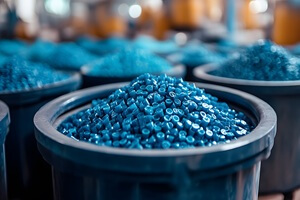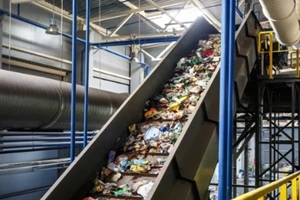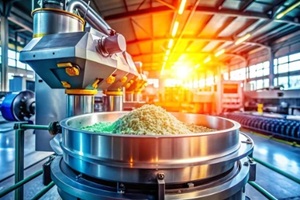April 14, 2025

The plastics industry is facing a revolution fueled by the urgent need to address waste and improve sustainability in the plastic economy. At the forefront of this evolution is a groundbreaking chemical recycling technology designed to tackle the persistent challenge of declining material quality in recycled plastics. This innovative approach promises to breathe new life into discarded materials, turning them into high-quality products suitable for a circular economy.
With advancements in catalyst design and engineering precision, scientists are rewriting the rules of recycling. The result? A method that holds the potential to redefine how industry plastic processors handle plastic waste, paving the way for more sustainable and scalable solutions.
Mechanical recycling has long been the standard method for managing plastic waste, but its limitations are becoming increasingly apparent. Each time plastic is recycled mechanically, the material’s quality deteriorates, which reduces its functionality and limits its potential for reuse in high-performance applications. Over time, mechanically recycled plastics are relegated to lower-value uses, eventually leaving no option but disposal.
Current recycling systems also struggle to keep pace with the growing demand for high-quality recycled materials. With hundreds of millions of tons of plastic waste generated globally each year, mechanical methods cannot produce the consistent, high-grade output required to meet industry standards and growing sustainability goals.
These shortcomings highlight the pressing need for alternative approaches capable of handling this immense waste stream while maintaining material integrity. Addressing this challenge is an important step toward a truly sustainable plastics economy for plastic processors.
Chemical recycling is emerging as a true revolution for the plastics industry, offering a solution to one of its most persistent challenges: quality deterioration. Unlike mechanical recycling, which degrades material properties over time, chemical recycling breaks down long-chain polymers into their basic building blocks, or monomers.
These monomers are used to create new plastics with the same high performance as virgin materials, offering a transformative step toward a closed-loop, circular system in plastic production. Recent research highlights a major breakthrough in this field, where advanced catalyst designs and hydrogen integration have significantly improved the efficiency of breaking down polyethylene and polypropylene.
Such advancements underscore the transformative possibilities of chemical recycling, paving the way for a future where recycled plastics maintain their value and utility across multiple life cycles.
Catalysts and hydrogen are redefining the possibilities of chemical recycling, providing innovative solutions to long-standing challenges. At the heart of this process is the ability of catalysts to enhance reaction efficiency, breaking down polymers into molecules of specific lengths.

Hydrogen plays a pivotal role in refining this process. When introduced to molten plastic, it works alongside powdered catalysts, such as those containing ruthenium, to drive more controlled and efficient breakdowns.
Research has demonstrated the remarkable impact of these catalysts, showing how they minimize the production of undesirable gases like methane or propane. This approach has significantly improved the overall efficiency of chemical recycling. Further refinement of catalyst design remains a key priority for researchers. Advancements in this area will help unlock even greater precision and scalability, moving chemical recycling closer to widespread industrial adoption.
Precision engineering is core to chemical recycling, as the physical conditions within the reactor directly influence the process’s efficiency. Stirring molten plastic, which can be a thousand times thicker than honey, requires careful control of speed and blade geometry.
Researchers have found that an impeller with blades parallel to the axis, combined with a stirring speed of around 1,000 revolutions per minute, provides the best results. This configuration promotes even mixing, allowing catalysts and hydrogen to interact uniformly with the molten plastic.
These engineering choices significantly enhance catalyst performance, improving the molecular breakdown of polymers into valuable outputs while minimizing undesirable byproducts. Adding to this advancement, researchers developed a mathematical model that captures the chemical recycling process’s key parameters. This formula enables scientists to predict and optimize outcomes, streamlining experimentation and reducing guesswork.
The model also serves as a foundation for scaling the process from lab settings to industrial applications. Its ability to control variables with precision lays the groundwork for more efficient and reliable recycling systems.
Join our PLASTICS Pulse newsletter today to receive updates on within the plastic industry while staying informed & connected.
Transitioning chemical recycling from laboratory research to industrial adoption requires a focus on refining and optimizing catalysts for large-scale use. Current advancements help provide a valuable roadmap for scaling this technology. The research highlights essential parameters, including precise stirring techniques and the role of hydrogen, which serve as foundational principles for industrial applications.
Overcoming these hurdles will require major infrastructure upgrades and considerable financial resources to be invested. However, targeted funding and strategic partnerships can address these hurdles. Collaborations between industry and research institutions will be key to translating laboratory success into commercial viability. With a clear path forward, chemical recycling has the potential to reshape global plastic waste management on an industrial scale.

Industry leaders among plastic processors play an essential role in driving the adoption of advanced chemical recycling technologies. Investing in research and development is essential to remain competitive and meet increasing sustainability demands, while partnerships with research institutions can accelerate innovation and the creation of scalable solutions.
Executives have an opportunity to lead the charge in transforming the plastics economy as we know it. Embracing chemical recycling positions companies as pioneers in sustainability while addressing growing environmental and regulatory pressures. The time to act is now. This technology represents an important step toward a more sustainable and profitable future for the plastics industry.
Chemical recycling offers a transformative path forward for the plastics industry and plastic processors by addressing challenges in material quality, scalability, and sustainability. From advancements in catalyst design to engineering precision and industrial implementation, this innovative approach has the potential to revolutionize plastic waste management and support a circular economy.
Professionals looking to stay informed about cutting-edge technologies and industry advancements are encouraged to join PLASTICS, the Plastics Industry Association. Joining the association provides access to valuable resources, insights, and opportunities to collaborate with leaders shaping the future of plastics.
PLASTICS and the Future Leaders in Plastics (FLiP) Committee are devoted to supporting and encouraging the next generation of plastics leaders who will play a crucial role in the innovation, technology and future of the plastics industry. FLiP’s mission is to provide young professionals under the age of 40 the exposure, education and resources they need to build lifelong careers in plastics. Want to join? Want to get your employees involved? Email: flip@plasticsindustry.org